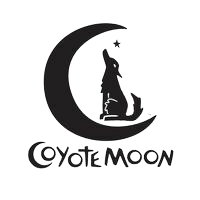As the much-anticipated February 14th approaches, the world becomes immersed in a sea of red hearts, chocolates, and dreams of perfect romance. But have you ever wondered about the origins of Valentine's Day? This deep dive into the history of the love holiday unveils its true meaning, tracing its roots from ancient rituals to its significance in today's social fabric.
Uncovering the Ancient Roots of a Modern Love Holiday
Contrary to popular belief, the history of Valentine's Day goes far beyond greeting card companies and chocolatiers. It is steeped in ancient tradition and lore. Historians suggest that Valentine's Day may have its roots in the ancient Roman festival Lupercalia. This mid-February celebration involved fertility rites and the pairing of women with men through a lottery system – a far cry from the exchange of love notes and gifts we know today.
According to Dr. Lucia Kuhlman, a specialist in European folklore, Valentine's Day can be seen as a tapestry woven from both Christian and ancient Roman traditions, creating a day that blends the sacred with the profane. It has evolved from its less romantic beginnings to become emblematic of love.
Martyrdom and Matchmaking: The Transition to St. Valentine's Day
You may wonder what a Roman execution has to do with love letters and heart-shaped candies. The transition from a pagan festival to a Christian feast day is where the story becomes more complex. The Catholic Church recognizes at least three different saints named Valentine, all of whom were martyred on February 14. The most popular legend tells of a priest who continued to officiate marriages for young lovers in secret after Emperor Claudius II outlawed marriage for young men.
The martyrdom of St. Valentine, a poignant stand for love in the face of oppression, may have influenced the transformation of the old Lupercalia festival into Valentine's Day as we know it today. Dr. Harold Kerrigan, a historian with expertise in early Christian traditions, explains that the connection between St. Valentine and romantic love is not documented until the Middle Ages. The church aimed to replace the earlier pagan festival with a day that could honor Christian values, which ultimately led to the Valentine's Day celebration we know today.
Beyond Chocolates and Greeting Cards
While today's Valentine's Day has undoubtedly become commercialized, with billions of dollars spent on gifts, dining out, and getaways, the heart of the celebration remains the expression of love and appreciation for one another. Relationship counselor Elaine Turner suggests that the true meaning of Valentine's Day doesn't come from the store; it comes from taking the time to cherish the relationships we hold dear. Whether it's a romantic partner, a friend, or a family member, the spirit of the day is about affirming those bonds.
Love in Diversity: Valentine's Day Around the World
Valentine's Day is celebrated in various ways across the globe, reflecting local customs and traditions. In parts of Latin America, the day is known as "Día del Amor y la Amistad" (Day of Love and Friendship), emphasizing broader connections beyond romantic love. In Finland and Estonia, February 14th is celebrated as "Friend's Day," an occasion to show gratitude to friends. These diverse traditions highlight the multifaceted nature of love that Valentine's Day represents.
Embracing the Essence of the Day
As Valentine's Day approaches, take a moment to reflect on the layered history of this holiday. It's an opportunity to reconnect with its deeper meanings and contemplate the countless ways love has been celebrated throughout the centuries. Whether you choose to send a heartfelt letter, share an intimate dinner, or simply spend quality time with loved ones, let the spirit of love and companionship guide your actions.
"Valentine's Day is not just a commercial invention; it is a modern expression of our inherent need to love and be loved," concludes Kerrigan. By revisiting its origins, we can truly appreciate the universal celebration of love and connection that this day represents. So, as you embrace the varied tapestries of love this February 14th, let it serve as a reminder of its profound history, from pagan festivals to tales of martyred saints, to our present-day celebrations. Love, in all its forms, remains an indefatigable force that intertwines through time, invoking joy, reflection, and celebration.
Nodding to the Experts
Behind every compelling narrative, there often stand figures of authority whose insights deepen our understanding of a subject. In our exploration of the Love Holiday History and the True Meaning of Valentine’s Day, we have particularly benefitted from the expertise of Dr. Lucia Kuhlman and Dr. Harold Kerrigan. Their scholarly work in European folklore and early Christian traditions, respectively, ground the Valentine’s Day Origin story in a rich historical context.
Dr. Kuhlman's examination of Valentine's Day reveals a meaningful intersection between age-old customs and Christian sentiments, offering a comprehensive view of how the day transcends its commercialized veneer. Meanwhile, Dr. Kerrigan sheds light on the day's metamorphosis from martyred saints' remembrance to a universal celebration of love, adding layers to our understanding of February 14th. These experts help us navigate the past's complexities, connecting us to the holiday's multifaceted legacy and encouraging a deeper appreciation of a day dedicated to love.
